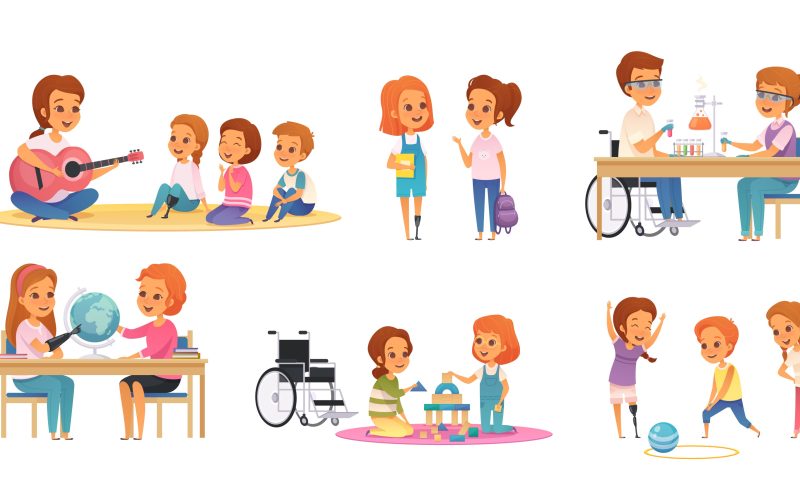Finding affordable, high-quality child care is a significant challenge for many families. Rising costs, limited availability, and the need for trustworthy providers make this process overwhelming, especially for families on a budget. According to recent statistics, only 15% of eligible children in the U.S. receive federal child care assistance, leaving millions of families struggling to balance work and caregiving responsibilities. Additionally, 51% of child care providers report serving fewer children now than before the COVID-19 pandemic, further limiting options for families.
Child care assistance programs can be a lifeline, helping parents afford quality care while ensuring their children thrive in safe and nurturing environments. This blog helps you to understand these programs, and selecting the right provider to meet your family’s need.
Why Affordable Child Care Matters?
Did you know the average cost of child care in the U.S. is over $10,000 per year? But with the right resources, you don’t have to pay that much.
- Early Childhood Education: Quality child care fosters cognitive, social, and emotional development, preparing children for academic success.
- Work-Life Balance: Reliable child care allows parents to maintain employment or pursue education without sacrificing career growth.
- Financial Relief: With child care costs consuming up to 22% of household income for many families, assistance programs can significantly ease this burden.
Child Care Assistance Programs: What Are Your Options?
Child care assistance programs offer financial support to help families afford quality care. Below are some common options:
Federal & State Programs
- Child Care and Development Fund (CCDF): Provides subsidies for licensed child care services to low-income families.
- Head Start & Early Head Start: Federally funded programs offering free early childhood education for eligible low-income families.
- State-Specific Subsidies: Many states provide additional funding tailored to local needs. For example, New York’s CCAP covers part or all of child care costs for qualifying families.
Other Assistance Options
- Employer-Sponsored Benefits: Some employers offer on-site daycare facilities or reimbursements for caregiving expenses.
- Nonprofit & Community-Based Programs: Organizations like YMCA provide affordable child care options based on income.
- Tax Credits: Families can claim the Child and Dependent Care Tax Credit to offset a portion of their expenses.
If you qualify, these programs can cover a significant portion, if not all of your child care costs.
How to Apply for Child Care Assistance and Find an Approved Provider
Choosing the right provider is essential for your child’s well-being. Here’s how to find one:
Start with an Approved Provider List
Many assistance programs maintain directories of eligible providers who accept subsidies. Use these lists as your starting point.
Key Factors to Consider
- Licensing & Accreditation: Ensure providers meet state requirements and hold certifications like those from NAEYC.
- Safety Measures & Cleanliness: Visit facilities to check secure entry points, safe play areas, emergency preparedness plans, and sanitary conditions.
- Staff Qualifications & Experience: Look for caregivers trained in early childhood education and first aid.
- Learning Programs & Curriculum: Opt for providers with structured activities that promote cognitive and social growth.
How to Research Providers
- Check online reviews and ratings.
- Ask for recommendations from other parents.
- Schedule visits to observe staff interactions and assess the environment.
Tip: Not all child care centers accept assistance, so always confirm before enrolling.
The Application Process: Step-by-Step Guide
Step 1: Check Eligibility Requirements
Eligibility criteria vary by program but typically include income limits, residency status, and proof of employment or enrollment in school/training programs.
Step 2: Gather Necessary Documents
Prepare items such as:
- Proof of income (e.g., pay stubs or tax returns)
- Employment verification
- Child’s birth certificate
- Residency proof
Step 3: Submit Your Application
Applications can be submitted online via state websites or through local agencies.
Step 4: Get Approved & Find Providers
Once approved, you’ll receive a list of qualifying providers. Use this list to narrow down your options based on location, cost, and quality.
Step 5: Schedule Visits and Ask Questions
Before finalizing your choice, visit multiple providers. Ask about their experience with assistance programs, policies on payments, and flexibility in schedules.
Reminder: Applying early is key! Some programs have waiting lists, so don’t wait until the last minute.
Making the Transition Smooth for Your Child
The first few days might be tough, but a little preparation goes a long way. Starting at a new child care center can be an adjustment for your child. Here are tips to ease the transition:
- Visit the center with your child before their first day.
- Keep communication open with caregivers about your child’s needs.
- Maintain familiar routines at home to create stability.
- Encourage your child with positive talk about their new environment.
Conclusion
Child care financial assistance in Missuori helps families secure high-quality, affordable child care options. By utilizing state and federal assistance programs, parents can significantly reduce their expenses while ensuring their children receiive the best possible care.
Understanding the eligibility requirements, application process, and how to select an approved provider can make the journey toward affordable child care smoother. Parents should spend more time in research available resources, compare different providers, and stay informed about any updates to assistance programs. With careful planning and the right support, families can confidently navigate child care financial assistance in Missuori and make informed decision that benefit their child’s decelopment and future success.












